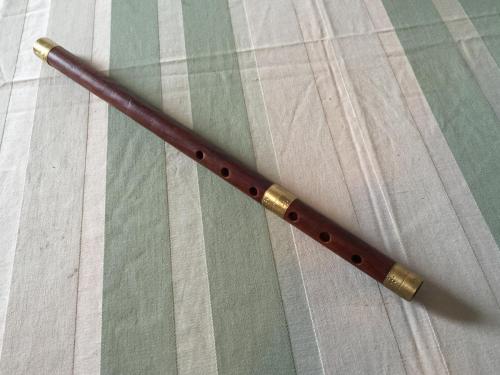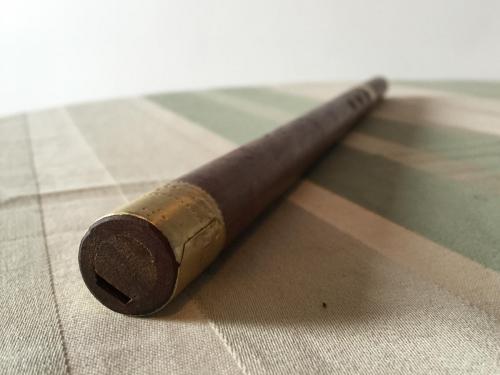The common fluier is a Romanian end-blown flute with a recorder-like fipple for sound production. "Fluier" itself translates to "flute" and I have seen the term used to refer to anything from common fluier to Romanian caval to Western concert flute to nai. The one that I have (pictured) comes from what was historically the most common subset of Romanian fipple flutes, those with six holes; however, both the number of holes and the key of the instrument has varied from place to place.
In Alexandru Tiberiu's book Romanian Folk Music, he writes, "The most widespread of all folk instruments used by the Romanians is the fluier (flute). There is hardly a village where its sound is not heard" (90). I find this a bit surprising, considering the book was published relatively recently - in Romanian in 1975 and the English translation in 1980. Most researchers with whom I have spoken seem to agree that wind instruments are a dying tradition in the villages - one colleague noted a few months ago that she had never encountered one in Transylvania, while another noted that there are only a few village players and instrument makers left in the country. I wonder - when and why did this change?

